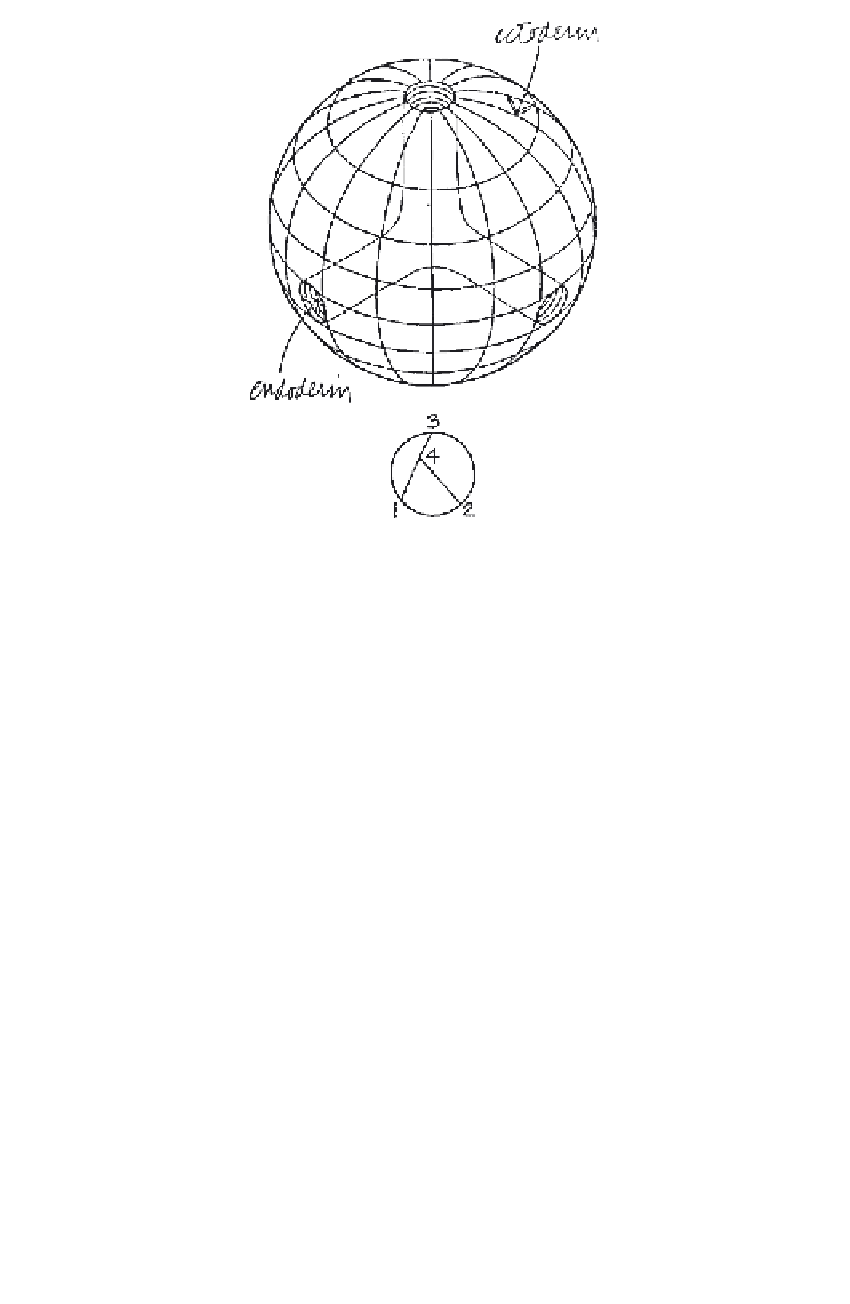Information Technology Reference
In-Depth Information
FIGURE 1. Closed orientable surface of genus
p
= 2,
s
= 3,
t
= 1, [
s
+
t
]/2 = 4/2 = 2.
This situation for a “fishlike” creature is sketched in Fig. 2a. The pro-
prietary coordinates, x, of the fish are here superimposed over the partici-
patory coordinates, k, of the observer.
The pedagogical artifice of which I spoke before consists of transform-
ing the system of coordinates in such a way that the proprietary coordinates
become Euclidian everywhere, which means that the world of the fish has
to be mapped onto the Representative Unit Sphere (Fig. 2b; x are polar
coordinates.) With this, however, the world “out there” is no longer
Euclidian, as can be seen from the divergence and convergence of the ver-
tical x coordinates.
A motion of the fish as seen by the observer (Figure 3a) means for the
fish that he has changed the metric of his environment by tensing his
muscles (see Fig. 3b); he himself, naturally, has remained the same (invari-
ance of self-reference) is expressed by the Representative Unit Sphere.
Please note the line of vision from eye to tail, which is by the observer
interpreted as a straight line (Fig. 3a) which, however, has to be computed
as such by the fish, who sees his tail through the curved geodetic of Fig. 3b.
For this computation he only has available to himself the activation inten-
sity along his surface. Although I do not want to show here in all rigor that
these data are insufficient to compute the nature of his “environment,” I
nevertheless hope that it becomes clear that only by correlating the motor
activity of the organism with the resulting changes in its sense organs makes
it possible for it to interpret these neural activity uniquely. In somewhat

Search WWH ::

Custom Search